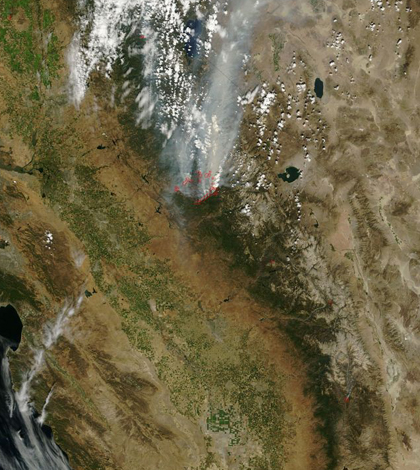UC Berkeley scientists propose fire-detection satellite

A satellite image of the Rim Fire in California, first detected by someone who saw the rising smoke (Credit: NASA, via Wikimedia Commons)
Following a record wildfire season experienced by the Western United States in 2013, scientists at University of California, Berkeley say new satellites to help prevent the blazes are needed, according to a release.
Ahead of any concrete government plan, they’ve designed what they say is the perfect satellite for the job. Called FUEGO, the proposed satellite uses state-of-the-art remote sensors to detect hot spots and analysis software to minimize false alarms. The idea has been struck down before because of possible false alarms, brought about by inferior sensors that couldn’t distinguish between real hot spots or hot windshields on cars.
With the new fire detection tool, the scientists say hot spots could be detected before they turn into fires, possibly saving state and federal monies spent on disaster relief. FUEGO stands for Fire Urgency Estimator in Geosynchronous Orbit.
Image: A satellite image of the Rim Fire in California, first detected by someone who saw the rising smoke (Credit: NASA, via Wikimedia Commons)





0 comments